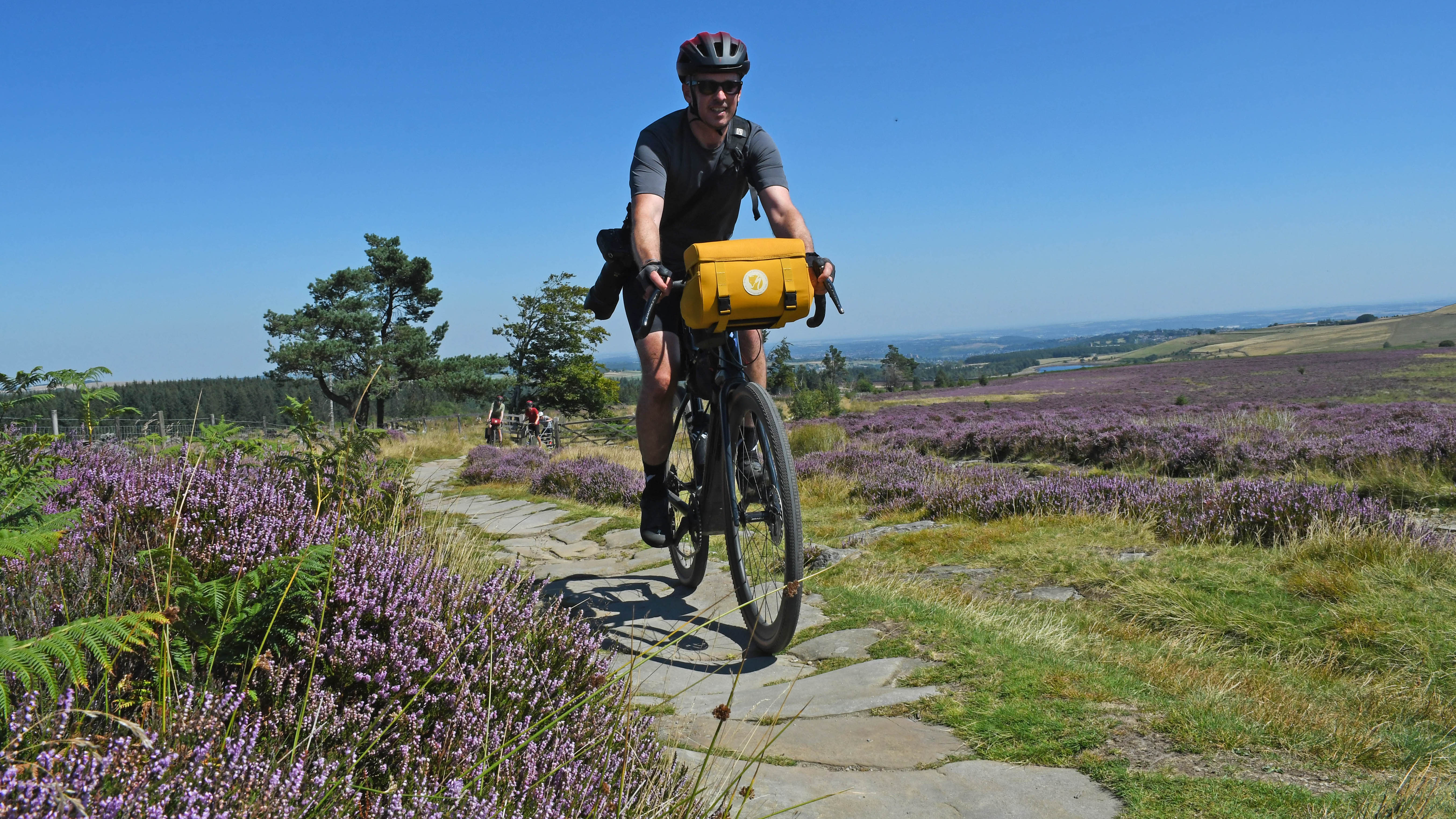
There is a buzz around bikepacking at the moment that almost rivals the rapture that newspaper travel pages and online influencers usually reserve for wild swimming. If you follow a few outdoorsy types, then scrolling through your feed gives off the distinct impression that everyone’s at it, but how many people do you know who have actually done any real bikepacking?
Could it be that it’s one of those activities that sounds and looks ace but, in actuality, proves too fiddly and uncomfortable for you to truly embrace it? Or do you think there’s just too much specialist kit involved to make it practical for you to give it a proper crack?
Well, I’ve spent several chunks of the last 12 months doing various forms of bikepacking, and I’m here to tell you that – if you have even the faintest hint of an explorer’s pulse or any semblance of love for alfresco adventures – it’s absolutely something you should be doing this summer. And here’s why.
Cycling + camping = bikebacking
Just in case you’ve been in a coma or wandering around a remote rainforest for the last five years or so, I’ll start with a definition: bikepacking is like backpacking – just swap your legs for wheels and your back for a bicycle frame. Bikes and camping…what’s not to like? Nothing. Just add an exciting destination and some mates and go exploring. Why are you still here?
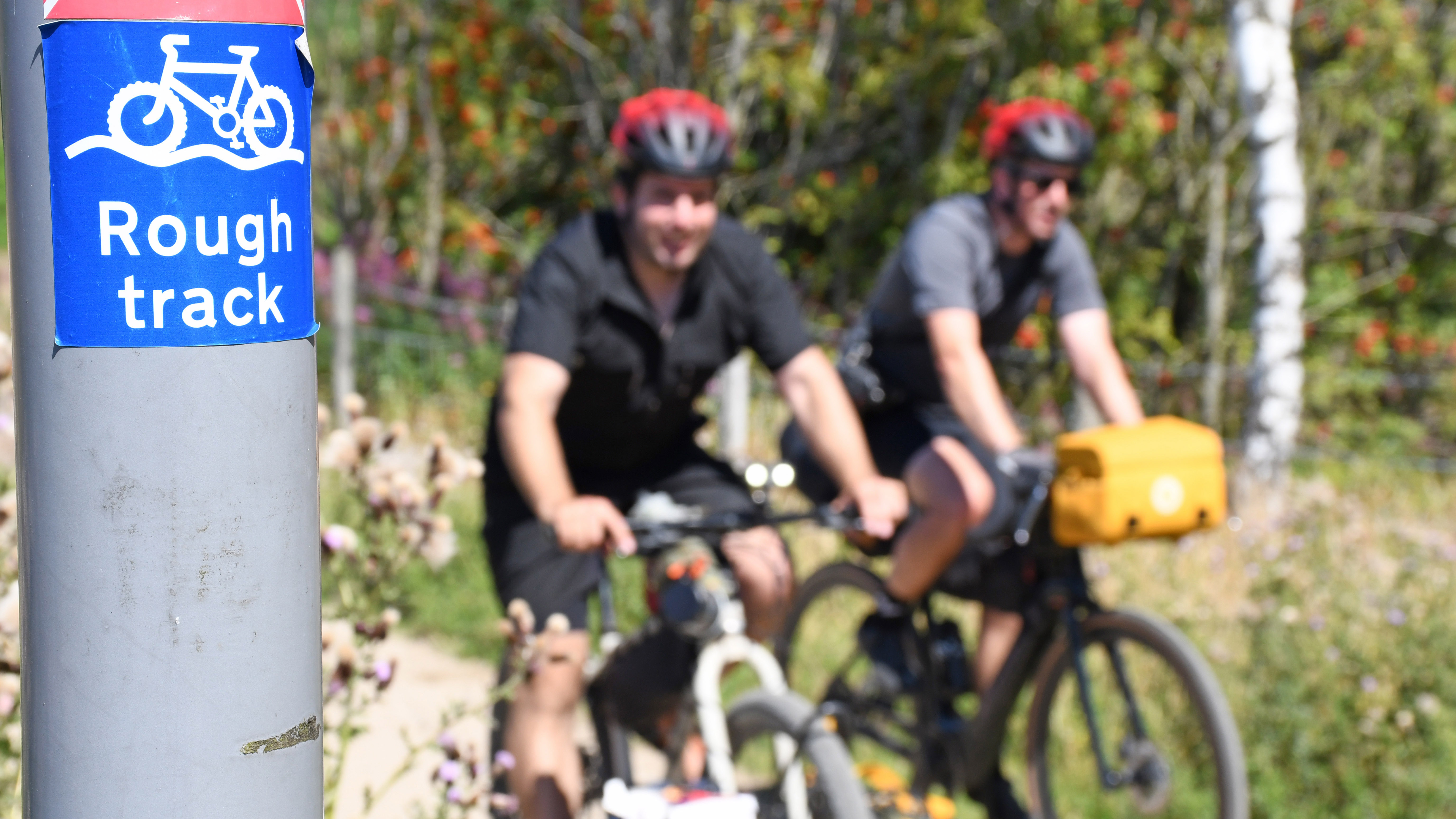
Freeeeedom
Bicycles have long been branded ‘freedom machines’ (fun fact, this brilliant descriptive term for bikes was originally used by early feminists), but bikepacking is the ultimate expression of two-wheeled liberation for the modern rider, regardless of gender, age, ethnicity or anything else.
Adventurous cyclists have been touring for decades with panniers strapped to regular bikes, but the advent of bikepacking as a concept in the late 1990s, when bespoke frame bags began to be developed for mountain bikes, followed by the more recent explosive evolution of gravel bikes, sent bike-based camping off the road, which propelled it right off the scale in terms of popularity.
Intrepid bikepackers can now explore almost anywhere they fancy the look of. Seriously, pick a place you want to go, plot a route via a mixture of roads, lanes, gravel tracks and bridleways, then get on your bike and go.
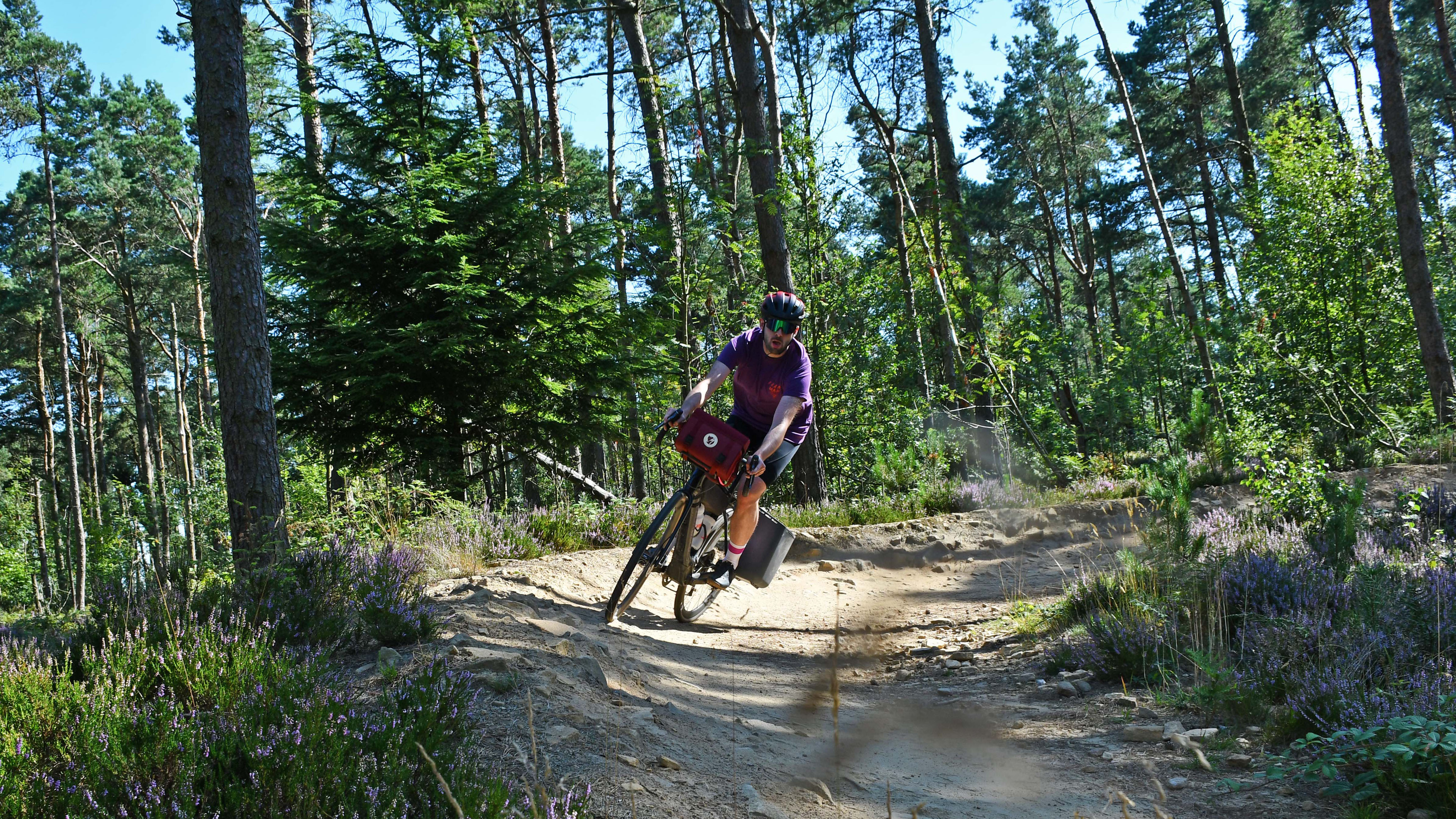
Barriers are there to be bunnyhopped
There’s now a massive amount of dedicated equipment for bike camping – really great gear by quality labels such as Fjällräven, who have recently partnered with a bike brand Specialized to produce a whole range of beautiful bikepacking kit – but, as with most outdoor activities, you do not need all this stuff to get started.
You do, of course, require a bike. And some means of carrying gear – ideally a saddle and/or handlebar-mounted bag, plus a frame bag or two. After that, the key to bikepacking success is reducing the pack size and weight of all the other essentials (and being disciplined about what constitutes an ‘essential’).
This means that summer is the very best time to give bikepacking a go because warmer weather and drier conditions mean you can get away with using a very lightweight sleeping bag with a tiny inflatable camping mat, and you can potentially dispense with a tent altogether, and instead sleep under a tarp or in a bivvy sack, or even a small hammock.
My advice is to start with a two-day, one-night adventure somewhere fairly local, so you can keep an eye on the weather forecast and keep your plans dynamic and changeable according to the predicted conditions. As your gain confidence and build up your bikepacking kit, you can take on longer and more demanding missions much further from home.
And I’m speaking from experience here because this is exactly how I got into bikepacking myself, learning through my mistakes as I bumbled along. It’s a fun ride, trust me.
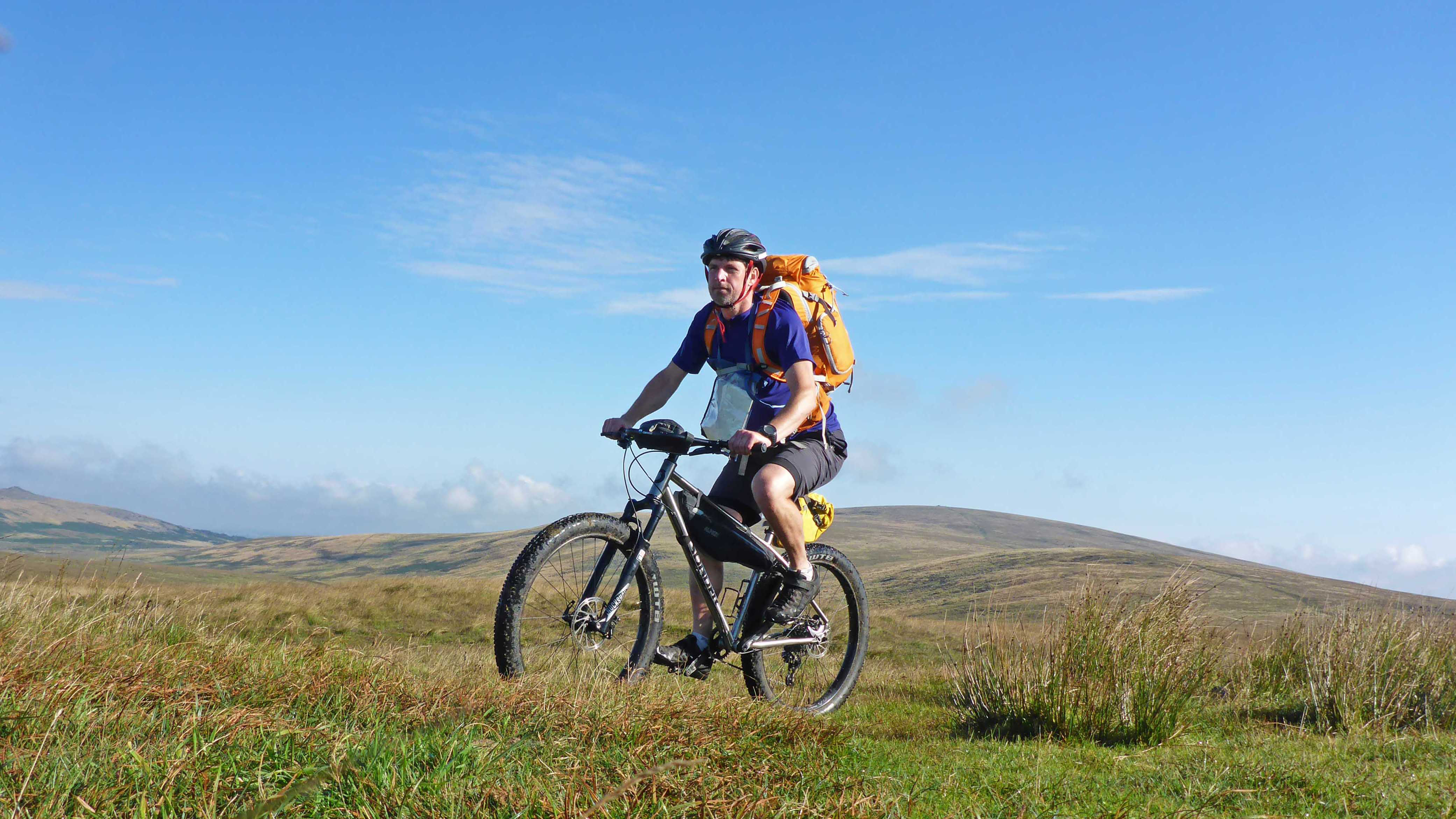
Doing it wrong on Dartmoor
My first forays into the bikepacking world were on Dartmoor. I didn’t really have a clue what I was doing, and I was using a hodgepodge of kit I already owned, combined with stuff I’d borrowed. I got loads of things completely wrong, especially packing far too much stuff into my backpack (carrying things on your back instead of your bike is a classic rookie error that negatively effects your centre of gravity, plays havoc with your balance on more technical trails and gives you a sore bum by the end of the day, because of the extra weight pushing you down on the saddle).
But I had a great time, cycling through woods and past an old medieval ghost village shrouded in a spooky mist, wild camping by the summit of Houndtor, awakening to the most glorious sun-splashed morning, and then continuing my micro-adventure across the magical moor.
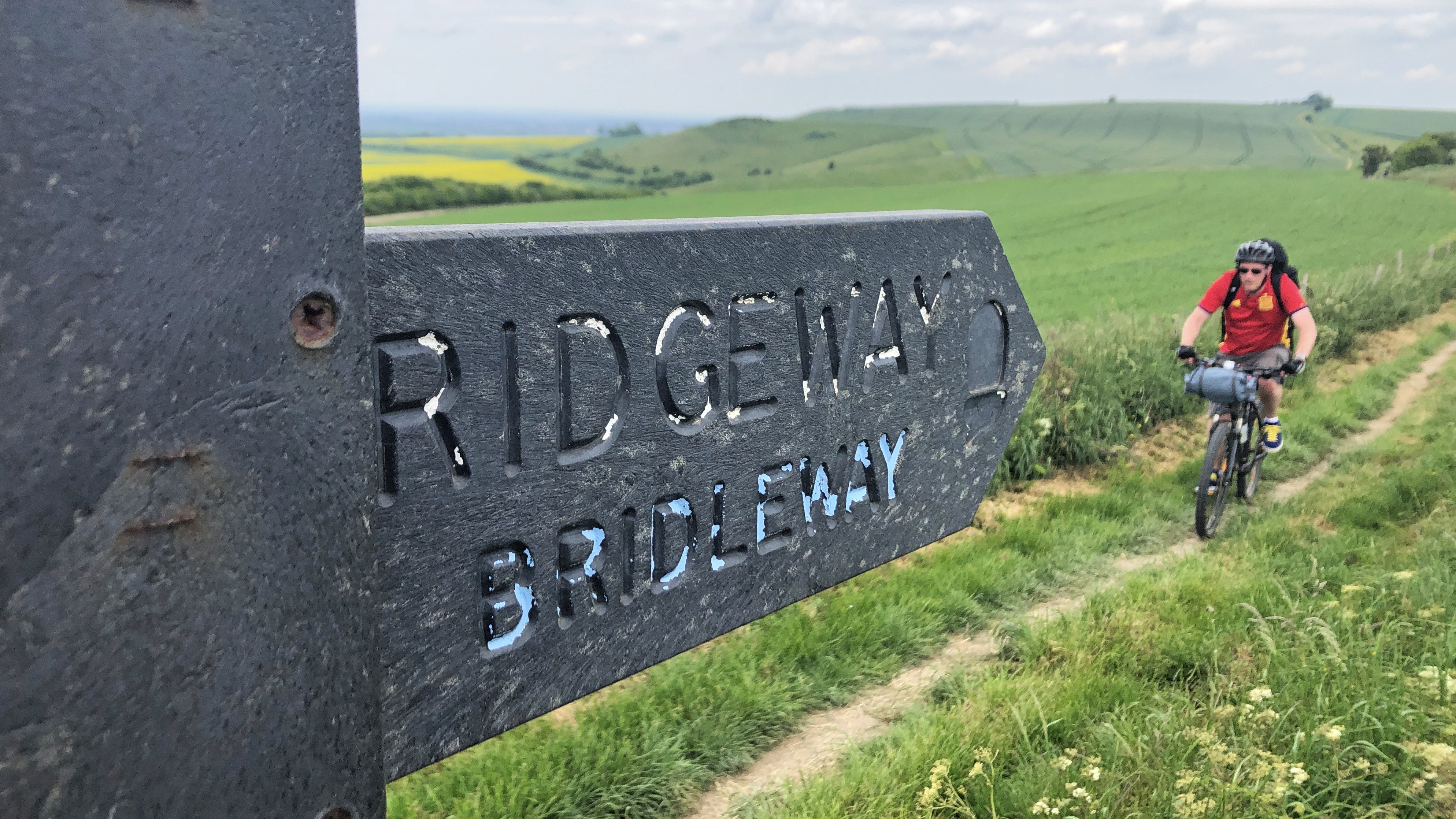
Take it to the Ridge
Dartmoor was a solo mission, but my next bikepacking adventure was with three close mates along the Ridgeway. Sometimes known as ‘Britain’s oldest road’, this ancient route has been used by traders, travellers and troops for thousands of years. Now a national trail (external link), it offers adventurers the chance to trek or run 139km (87 miles) between Ivinghoe Beacon and the World Heritage Site of Avebury in Wiltshire without encountering a single car. A large part of the route, from Goring-on-Thames to Avebury, can also be cycled, and it’s perfect as a two-day beginner’s bikepacking escapade.
And I was still very much a beginner. I carried more on my frame than before and whittled down my kit, but between us, we made multiple rookie errors – not least visiting a pub for a liquid lunch before we’d even climbed out of the Thames Valley and onto the ridge itself.
But it was a brilliant life-affirming couple of days, during which we retold age-old anecdotes, cursed colourfully during every climb, whooped loudly on each descent, laughed an awful lot, and made some more amusing memories while cycling through – and camping in – the Vale of the White Horse, en route to the prehistoric standing stones (and another pub) at Avebury.
For both of these adventures, I used a mountain bike, and fat-tyred steeds are perfectly good for bikepacking (although you need to be careful about how you position some frame- and saddlebags on bikes with suspension). However, on the Ridgeway, we saw lots of riders on gravel bikes, with their strategically selected gear perfectly packed and precisely positioned. I wanted to get amongst that.
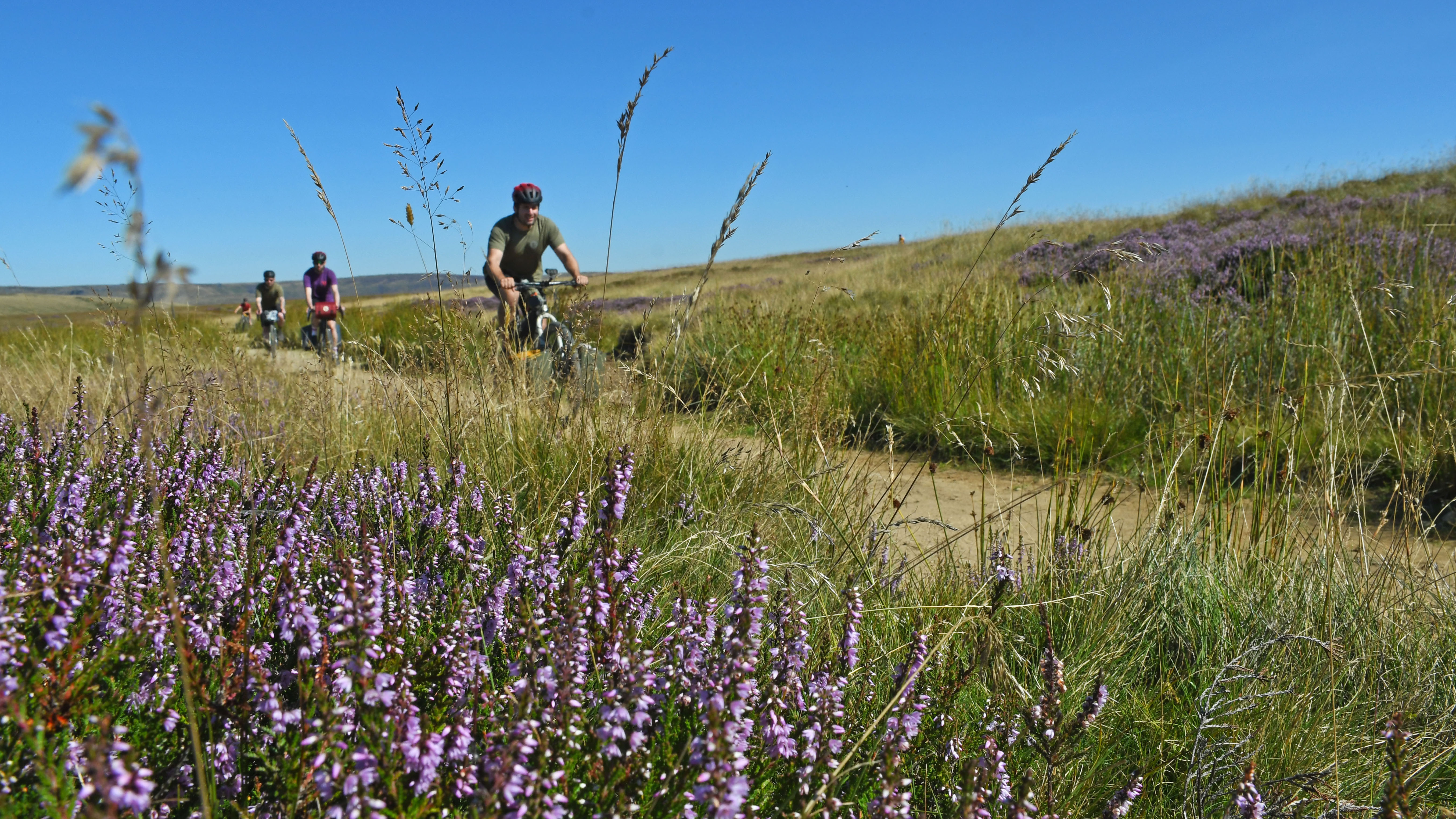
Peak Bikepacking
Soon I was lucky enough to get a chance to test out the aforementioned Fjällräven and Specialized bike backing bags on a two-day trip to the Peak District, led by two experts called Stef and Dave, who runs a bike guiding company called Pannier. Starting from Sheffield city centre, we cycled out of the old Steel City and up into the seven heather-covered hills that encircle it.
Within an hour, we were rolling along the edge of the High Peak, riding around Redmires Reservoir and climbing over Hallam Moor before dropping off the High Peak via a delicious descent beside the iconic climbing crag of Stanage Edge.
After a quick swim in a Hope Valley stream, followed by a whooping loop of lovely Ladybower Reservoir (where RAF 617 Squadron – better known as the Dam Busters – practised dropping the 'bouncing bomb' back in 1943), we set up camp in Edale, beside the start of the Pennine Way and beneath the brow Kinder Scout.
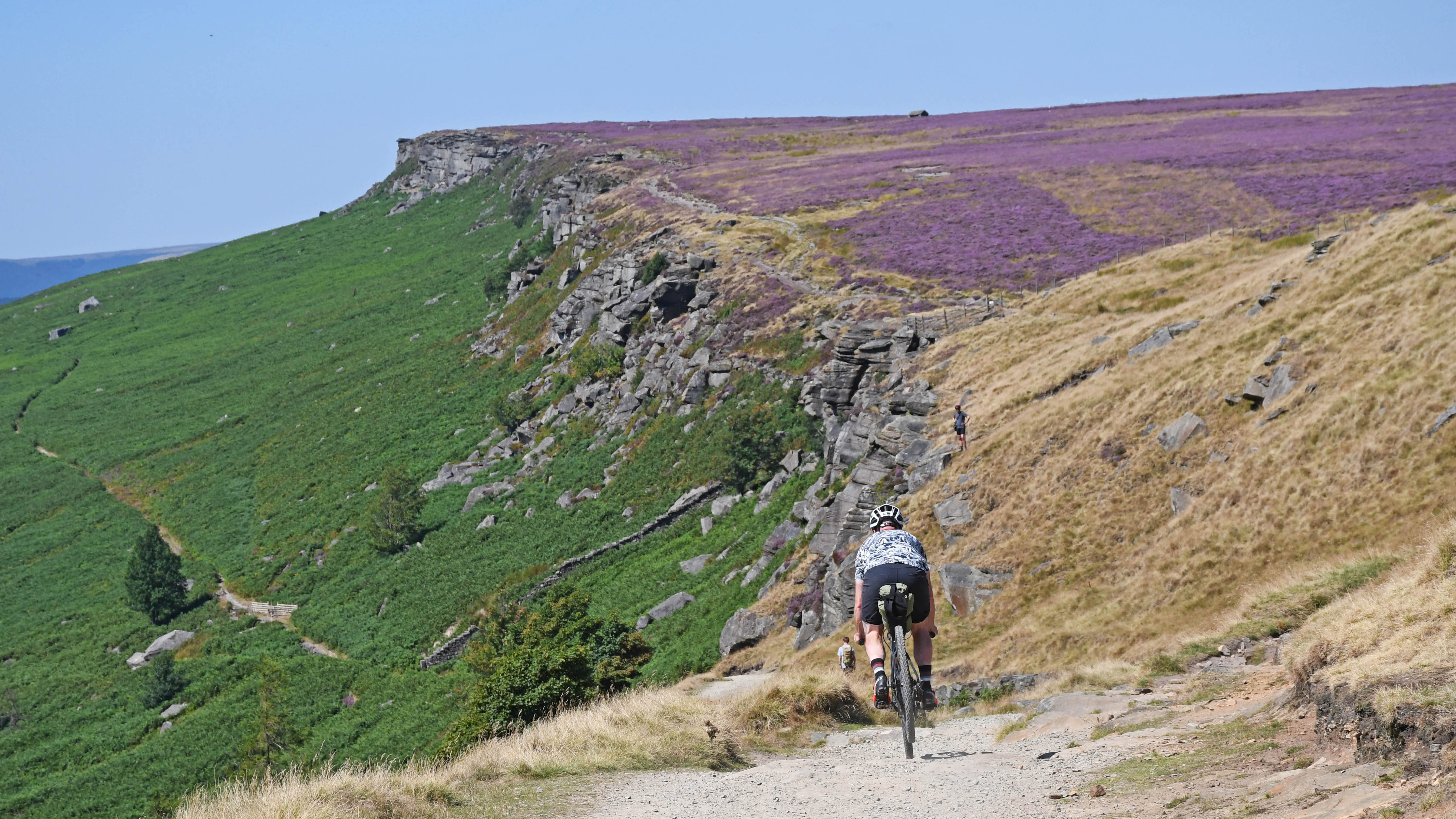
Camp smart
This is where, on 24 April 1932, a spectacularly disparate alliance of activists that included members of the Ramblers Society and the Young Communist League staged a large-scale protest about the exclusion of ordinary people from the vast majority of the British countryside. In an act of civil disobedience that became known as the Mass Trespass, they dared walk across the moorland and onto the flanks of Kinder Scout.
Events that day, which included violence from the landowner’s gamekeepers and multiple arrests, arguably led to the passing of the Countryside Rights of Way Act, plus the formation of national parks and a network of national trails in the UK. We have a lot to thank the trespassers for, but there’s still plenty to fight for in the struggle to achieve anything like a real right to roam, and this seems like a good place to address the contentious issue of wild camping.
Just like fastpacking and backpack-style trekking, bikepacking usually involves carrying all your gear with you, and one of the great things about doing this is that it gives you the freedom (there’s that word again) to travel along the trails for as far as you like, before setting up camp in a nice spot at the end of the day. Across most of Scotland and in many places around Europe and elsewhere, it’s entirely legal to do this, whereas, in the rest of Britain, wild camping is technically much more restricted – in fact, the very last place where you could wild camp completely legally was the Dartmoor Commons until a recent court ruling sparked outrage among the outdoor community by removing this right.
The legal fight continues against this ruling specifically and for greater access rights in general. But in the meantime, aside from taking a more planned (and restrictive/expensive) approach and booking spots in commercial campsites before you arrive, the most commonsensical and pragmatic way to deal with this is to do what all good wild campers have always done anyway: avoid busy areas and be discreet – pitch late, pack down early and follow strict leave-no-trace camping principles (including the avoidance of campfires).
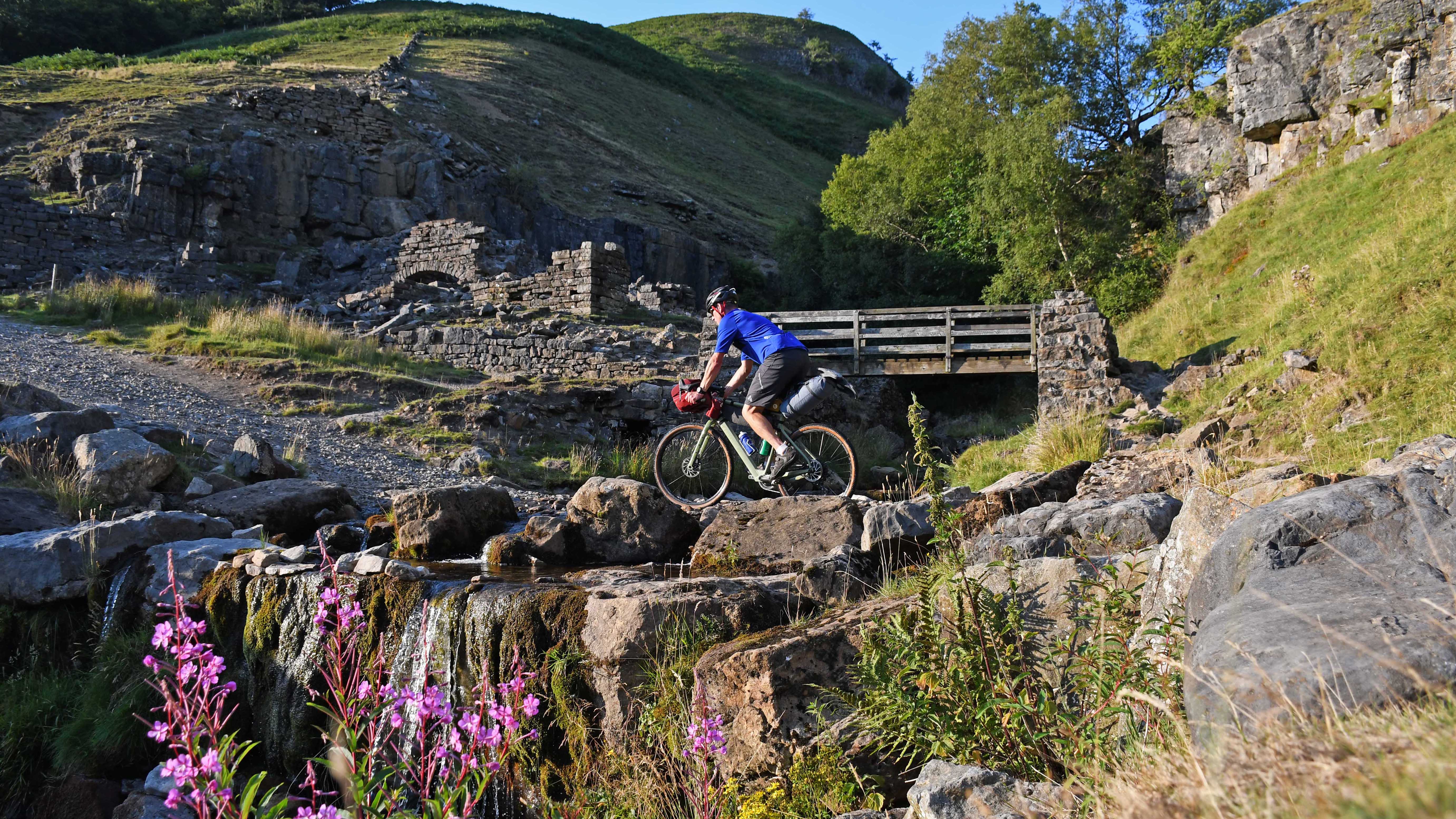
E-bikepacking
Another potential barrier to people trying bikepacking is that they don’t think they’re fit enough to do it. The obvious counter to this argument is that you can, of course, take on a very modest-length route with little or no elevation – canals towpaths are excellent choices for this because they’re always flat, and the surface is non-technical and easy to ride on. (For loads of options and ideas, check out apps such as Komoot.)
But, another way to allay fitness fears (especially if you’re planning to ride with friends who you worry might be a bit faster and more hill-happy than you are) is to use a bike with battery assistance. The evolution of e-bikes has taken place at hyper speed, and you can now get gravel bikes with batteries and discreet motors that are excellent for bikepacking, including the excellent Ribble Gravel AL e, which I was lucky enough to take for a multi-day spin around the Yorkshire Dales late last year.
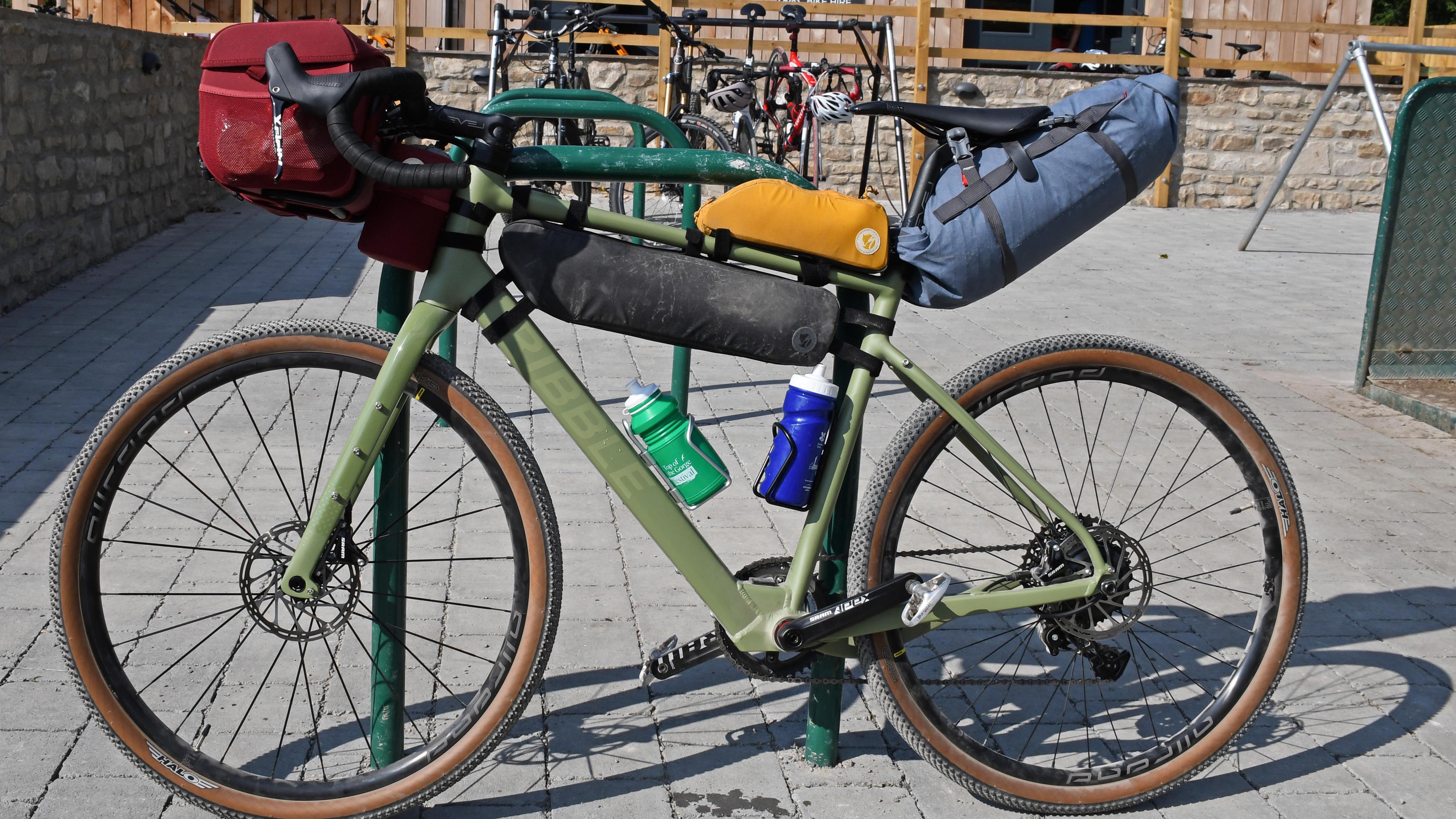
By this stage, I had my bags and kit completely sorted, and I knew how to pack with military precision, so when I set off along the Swale Trail from the brilliant Dales Bike Centre (external link) in Swaledale, my e-steed was perfectly balanced, and I was carrying nothing on my back whatsoever. Bliss.
My plan this time was to ride to England’s highest pub, the Tan Hill Inn, which stands proud 528m (1,732 feet) above sea level, high in the Dales – a picturesque pitstop for Pennine Way wanderers and, increasingly, thirsty bikepackers – since you can semi-wild camp on the moor outside for £10 (which includes the use of the toilets and shower).
I traced the south bank of the River Swale past Gunnerside under my own steam but made the most of the bike’s battery-assisted motor as I started puffing and panting while pedalling over Black Moor (along a rare rideable section of the Pennine Way). Finally, I crossed Stonesdale Moor and climbed over Lad Gill Hill to catch sight of the famous inn just as the sun started to set.
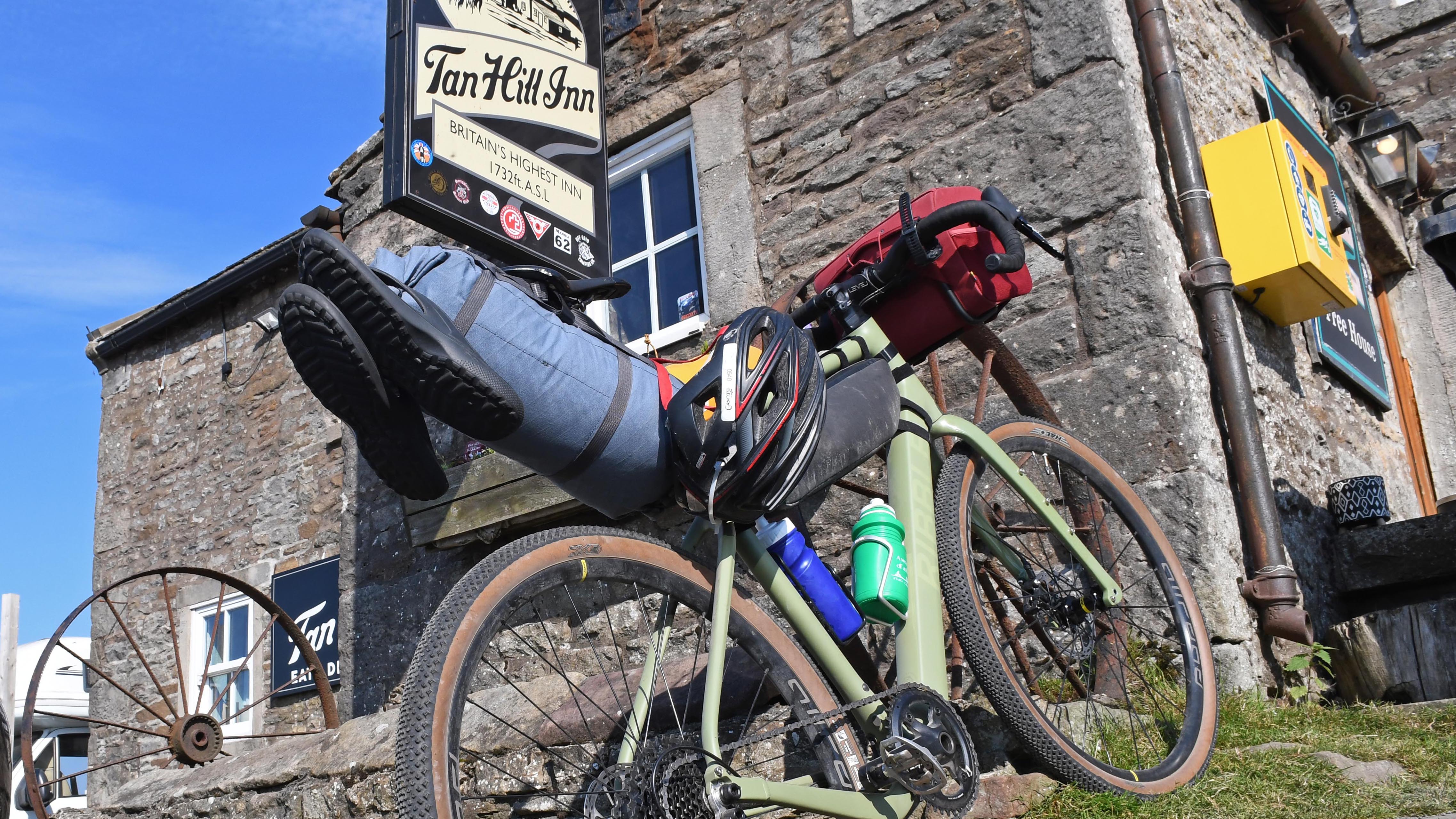
After setting up my bivvy among the boulders outside, I went in, slaked my thirst with a pint of Black Sheep ale and toasted my new adventure activity of choice. And then, over another beer, I began plotting more multiday bikepacking missions to take on. This summer, I have my eye on a rideable version of the Two Moors Way, a coast-to-coast epic across Devon, which links Exmoor and Dartmoor. Maybe I’ll see you out on the trails…







